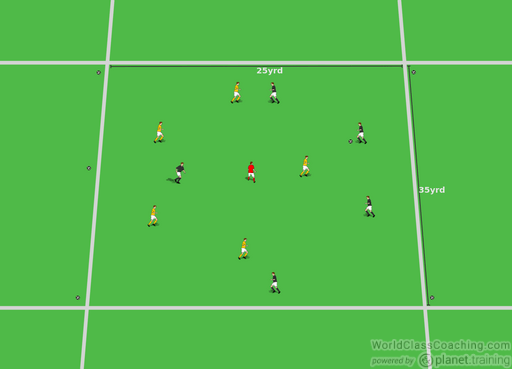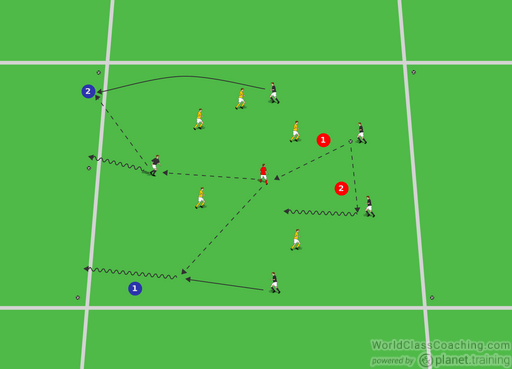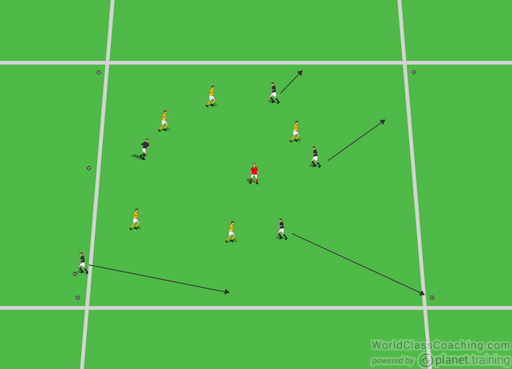By Sean Pearson
Area: 25 x 35 yards
Time: 15mins
Players: 5v5+1
Objective:
• To understand where to penetrate according to spaces
• To understand how to penetrate depending on where you are on the field
Set Up:
All that is needed is 4 cones to mark out the corners of the rectangle area. The area is wider than it is in length. On each side of the field there are 3 balls. The aim is to get the three balls behind your line across to the opposition’s side of the field. The team that is able to get all six balls on their opponent’s side wins.

Execution:
Overload the team in possession by adding a neutral to make it 6v5, this makes it easier to penetrate. Depending on the position of the defending team look to find either (Red 1) the neutral in space or (Red 2) a free player. Encourage you players to drive forward with the ball if there is space, this looks to draw a player towards them, allowing another player to be free to receive the ball.
In order to successfully deposit the ball behind the opposition’s line the ball must travel over this line whilst still under control. You can do this in either (Blue 1) dribbling/driving the ball over the line or (Blue 2) receiving the ball from a pass over but close to the line, no more than 2-3 yards from it.

After the ball has been left behind the opposition’s line the team retrieves another ball behind their own line. If the defending team win possession they can look to penetrate straight away.

You can play with or without an offside line. I explain to my players that we are in a game situation where we are in the middle third of the field and there would be defenders behind you so there is no offside. It also allows a little more freedom of movement to play in between the lines. But of course, you can still enforce an offside line if you wish.
Variations:
• Offside line/no offside line
• Add/decrease Neutrals
• Limit touches
• Change formation to replicate your midfield
By Sean Pearson. Sean is also the author Coaching Team Shape in the 3-3-1, Coaching Team Shape in the 4-2-3-1 and Coaching Team Shape in the 4-3-3


